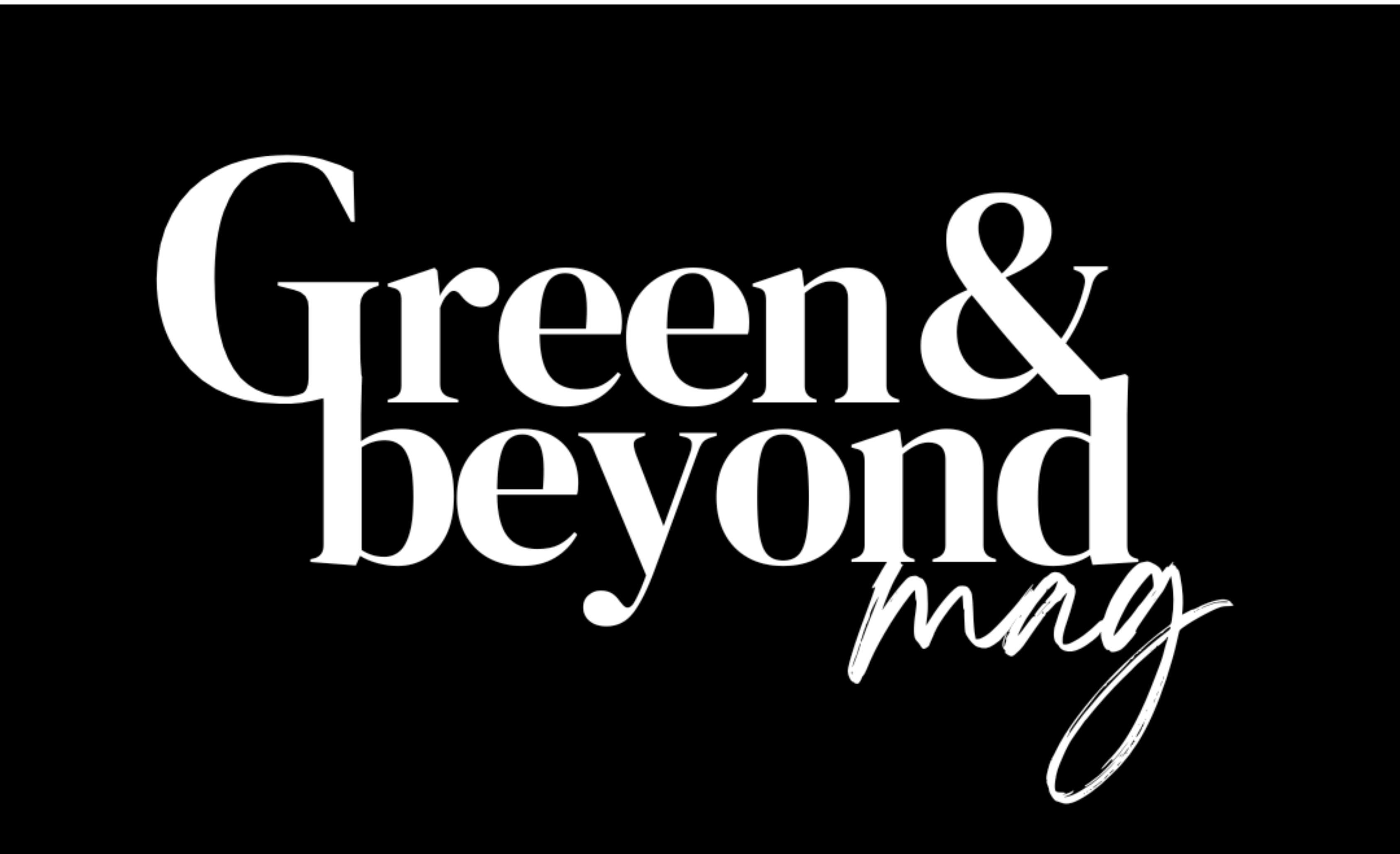
Let’s talk Sustainable Beauty: The Planet & You Deserve Better
Remember wandering the beauty aisles, hypnotized by the fancy colors and promises of perfection in a bottle? Girl, same. But lately, for me, something shifted. Call it curiosity, call it a growing conscience, but I’ve started to see the hidden costs behind those glossy labels. Turns out, that radiant complexion might come with a hefty price tag for the planet. So, here I am, a few discoveries and learning curves deeper, convinced that this Sustainable Beauty thing isn’t just a trend. It’s a revolution waiting to happen. It’s about peeling back the layers of what we put on our bodies, understanding how it impacts the world, and demanding better.
Think about the ingredients – what’s lurking behind those fancy names? Production – is it ethical, sustainable? Packaging – is it just another drop in a mountain of plastic? It’s a rabbit hole, and I’m still exploring, but I’m not going alone. Come join me, on this journey to unmask the truth about beauty and explore the world of Sustainable Beauty.
But First, What Exactly is Sustainable beauty?

Hold on, before we dive headfirst into the world of cruelty-free mascara and refillable moisturizers, let’s clear the air. What exactly is this “sustainable beauty” that everyone’s talking about?
Well, think of it like this: it’s not just about swapping your usual products for “green” versions (although, kudos if you already have!). Sustainable beauty goes way deeper. It’s about making conscious choices throughout your beauty routine, from the ingredients you put on your skin to the impact those choices have on the planet and its people.
Here’s the breakdown:
- Ingredients: Sustainable beauty products often prioritize natural, organic, and ethically sourced ingredients. This means avoiding harmful chemicals, minimizing use of synthetics, and supporting responsible farming practices.

- Production: It’s not just about what’s in the product, but how it’s made. Sustainable brands aim to minimize their environmental footprint throughout the production process. This includes prioritizing practices that minimize water usage, reducing pollution, treating workers fairly, and using renewable energy.
- Packaging: Gone are the days of mountains of plastic waste. Sustainable beauty embraces eco-friendly packaging, like recycled materials or refillable options like glass, bamboo, or compostable or other compostable options. Reducing and minimizing packaging is also encouraged.

- Overall Waste Reduction: Minimizing waste throughout the product life cycle is crucial. This includes encouraging product longevity, offering refills, and promoting proper recycling or composting of packaging.
- Ethics: It’s about looking beyond the surface and supporting brands that prioritize fair trade, cruelty-free practices, and responsible sourcing.
Now, Here’s Why We NEED to Choose Sustainable Beauty
The reality is, our self-care, just like our every other small choice, ripples outwards, impacting not just our skin but the entire planet. While we’ve been recently hearing a lot of talk about Sustainable beauty, it isn’t really a trend; it’s a conscious shift, a way to rewrite the narrative of beauty with respect for the Earth and its inhabitants. It’s about delving deeper than the surface, understanding the ingredients we put on our bodies, how they’re made, and the impact those choices have on our environment and the lives of others.
Zahra Kihel, co-founder of clean makeup brand Zakiella says, “Sustainability in beauty is all about caring for ourselves and our planet. When we choose sustainable products, like those created by Zakiella, we’re selecting items made with clean and carefully examined ingredients, tracing back to more local, organic sources whenever possible.” She further adds:

“Choosing sustainable beauty products means moving beyond just clean ingredients — the focus becomes a commitment to health and ethics, for ourselves and our environment.”
– Zahra Kihel, Co-founder, Zakiella
For the Earth We Share:
- Reducing pollution: Ditch the harsh chemicals and microplastics that pollute our waterways and harm precious ecosystems. Opting for sustainable products means less environmental damage, cleaner water, and a healthier planet for everyone.
- Saving Our Resources: From plant-based ingredients to recycled packaging, sustainable beauty conserves precious resources like water and energy. Think of it as giving back to the Earth that nourishes us all.
- Fighting Climate Change: Climate change is real, and the beauty industry plays its part. Sustainable practices like eco-friendly production and reduced carbon footprints help combat the issue, one lipstick tube at a time.

For Your Own Well-being:
- Saying No to Harsh Chemicals and microplastics: No more worrying about hidden toxins, microplastics or harsh ingredients that irritate your skin and affect your health. We talked to Corinne Lefebvre, Co-founder of River Organics

“There has been a lot in the news lately about microplastics and how they have found them inside pregnant women’s placenta, and that they are clogging our arteries and to me this will fuel a wake up call. This isn’t just about being ‘sustainable’, this is a health crisis.”
– Corinne Lefebvre, Co-founder of River Organics
Sustainable beauty prioritizes natural, gentle ingredients that nourish your skin and promote overall health.

- Bye-Bye Allergies: Say goodbye to itchy rashes and red eyes! By avoiding harsh chemicals and opting for natural ingredients, you minimize the risk of allergic reactions and enjoy the beauty routine you deserve.
- Feeling Good Inside and Out: Sustainable beauty isn’t just about the surface. It’s about understanding how what you put on your skin affects your overall well-being. Choosing natural ingredients and supporting ethical practices promotes holistic health from the inside out.
For a World We Care About:
- Fairness for All: Sustainable beauty champions fair trade practices, ensuring workers behind the scenes are treated ethically and compensated fairly. Your choices empower communities and promote a more just world.
- Supporting Your Community: Supporting local, sustainable brands keeps your dollars circulating within your community, fostering growth and opportunity for businesses around you.
- Kindness to Animals: Cruelty-free practices mean no animals are harmed in the name of beauty. Choosing sustainable brands ensures your beauty routine aligns with your values and promotes animal welfare.

Kihel further added, “At Zakiella, we took a stance to refuse to use microplastic ingredients in our products and striving for minimalist formulations with maximum performance. We focus only on what’s necessary and eliminate elements like microplastics, synthetic fragrances, parabens, and more.”

“Sustainable beauty helps protect our wellbeing and the health of pollinators and wildlife, all while reducing waste and keeping our environment cleaner and safer.”
– Zahra Kihel, Co-founder, Zakiella
Beyond the Label: Choosing Sustainable Products
So, you’re ready to dive into sustainable beauty, but where to begin? Navigating the aisle of green labels and eco-friendly claims can feel like deciphering hieroglyphics. Fear not, beauty explorer! Let’s shed some light on these key aspects:
Demystifying the Certifications:
Those little logos on your products can offer clues, but they’re not foolproof. Here are some common ones and what they mean:

Leaping Bunny: This bunny guarantees no animal testing at any stage of production.

B Corp: This certification signifies the brand meets high standards for social and environmental responsibility.

USDA Organic: This label assures at least 95% organic ingredients in cosmetics.
Remember, certifications are just one piece of the puzzle. Research the brand’s overall practices to get the full picture.
Ingredient Transparency: Don’t Be Fooled by Greenwashing
Beware of brands boasting “natural” or “eco-friendly” without being transparent about their ingredients. Look for specific ingredient lists and avoid products with hidden nasties like parabens or sulfates. Research unfamiliar ingredients and prioritize brands that prioritize transparency and ethical sourcing.
Packaging and Waste Reduction: It’s Not Just About What’s Inside:
Sustainable beauty goes beyond the formula. Look for products with minimal or recycled packaging, and consider brands with refill programs to reduce waste. Opt for solid products like shampoo bars or reusable applicators whenever possible.

Brand Values and Practices: Dig Deeper for True Sustainability:
Don’t just rely on labels; research the brand’s philosophy and practices. Do they prioritize fair trade? Are they committed to minimizing their environmental footprint? Choose brands whose values align with yours, supporting those who are truly walking the talk.
Getting Started with Sustainable Beauty
Feeling a little overwhelmed? Fear not! Here are some tips to make it accessible and easy to integrate into your routine:
Knowledge is Power:
- Do your research: Explore sustainable beauty websites, blogs, and social media communities to learn about brands, certifications, and practices. Follow sustainable beauty content creators like Besma Wahyeb, Habiba Abdulrahman, Summer Dean, Chloe Freed, Michelle Sabado, and platforms like Sustainable Beauty Coalition to stay updated on sustainable beauty practices and brands that you can trust.
- Understand the labels: Decipher common certifications like Leaping Bunny and B Corp, but don’t rely solely on them. Dig deeper into brand transparency and practices. You can check out platforms like Environmental Working Group (EWG), Credo Beauty, B Lab to find sustainable brands.
Start Small, Shine Bright:
- Swap it out: Don’t feel pressured to overhaul your entire routine. Choose one product at a time, like your shampoo or moisturizer, and replace it with a sustainable option.
- Prioritize based on needs: Consider your budget and skin concerns when making choices. For example, if you have sensitive skin, prioritize natural and gentle ingredients.
Be a Minimalist, Not a Maximalist:
- Multi-purpose magic: Opt for products that serve multiple purposes, like a tinted moisturizer or a cleansing balm that doubles as a makeup remover.
- Simplify your routine: Focus on essential steps like cleansing, moisturizing, and sun protection. Less is often more!
Support the Changemakers:
- Shop local, think global: Seek out small, sustainable brands committed to ethical practices and local sourcing. Apps like Yuka and Think Dirty can really help with identifying sustainable products when shopping.
- Refill, don’t replace: Choose brands offering refill programs to minimize packaging waste.
DIY with Caution:
Consider natural alternatives like coconut oil for makeup removal or apple cider vinegar as a toner. However, always research extensively and do patch tests before applying things to your face.
Be Earth-Conscious:
Recycle and dispose: Properly recycle or dispose of used products and packaging according to local guidelines. Every little bit counts!
Last but not the least, always remember not fall for eco-shaming, and focus on doing the best you can instead. Don’t forget to always celebrate your small changes and build on them slowly. Be kind to yourself.
Challenges and Considerations
- Greenwashing: Be wary of misleading marketing claims. Look for certifications from independent bodies like Leaping Bunny or B Corp for verified sustainability practices.
- Cost: Sustainable products can sometimes be more expensive due to responsible sourcing and ethical production. Consider investing in key items like moisturizer or sunscreen, and prioritizing quality over quantity.
- Accessibility: Not everyone has equal access to sustainable beauty options due to cost and availability. Supporting local, small businesses and advocating for wider accessibility are crucial.
The Future of Sustainable Beauty
Here’s the thing: the future is sustainable, or there is none. Hence, the world of beauty is brimming with exciting developments, paving the way for a more ethical and eco-friendly future.

“I don’t see any other way to operate or run a company in 2024. If I’m going to put something out there, with my name on it then it is not going to be part of the larger problem, and hopefully it will help in some way. Whether we help people make a non-toxic ingredient switch, a sustainable switch or we can help in any other small way, then that is the only way I feel we can operate.”
– Corinne Lefebvre, Co-founder of River Organics
Let’s peek into the crystal ball and see what’s brewing:
Innovation on the Horizon
- Biotechnology: Lab-grown ingredients are emerging as an alternative to resource-intensive cultivation practices. Think plant-based squalane or collagen!
- Solid beauty: Shampoo bars, deodorant sticks, and even toothpaste tablets are gaining traction, reducing plastic waste significantly. You can check out brands like Brixy.
- Waterless formulations: These innovative products like the ones from Dew Mighty minimize water usage and transportation emissions, offering effective alternatives to traditional liquids.
- Upcycled ingredients: Food waste like apple cores or coffee grounds are finding new life in beauty products, reducing waste and adding unique properties.
- Refill and reuse systems: Brands are offering refillable containers and encouraging consumers to reuse packaging, minimizing single-use plastics.
We hope that people will continue to discover the beauty of sustainable cosmetics and realize that we don’t need to compromise ethics for performance. If companies are held to a higher standard and products with microplastics or excessive packaging are avoided, that could make a huge impact on protecting our earth and water sources.
– Zahra Kihel – Co-founder, Zakiella
At this point, it’s crystal clear that sustainability is not really a niche trend; it’s a tidal wave reshaping the industry. Major brands are embracing eco-friendly practices, ethical sourcing, and circular economies. This shift is driven by a growing consumer demand for transparency and responsibility, and it’s creating a future where beauty and sustainability go hand-in-hand.
Your Voice Makes a Difference:
Remember, you are not just a consumer, but a powerful force for change! It’s not about being perfect, it’s about making conscious choices that feel good for us, our skin, and the planet we call home. Let’s get curious, get informed, and get talking about the beauty that lies beyond the hype. It’s time for a change, and it starts with us.




